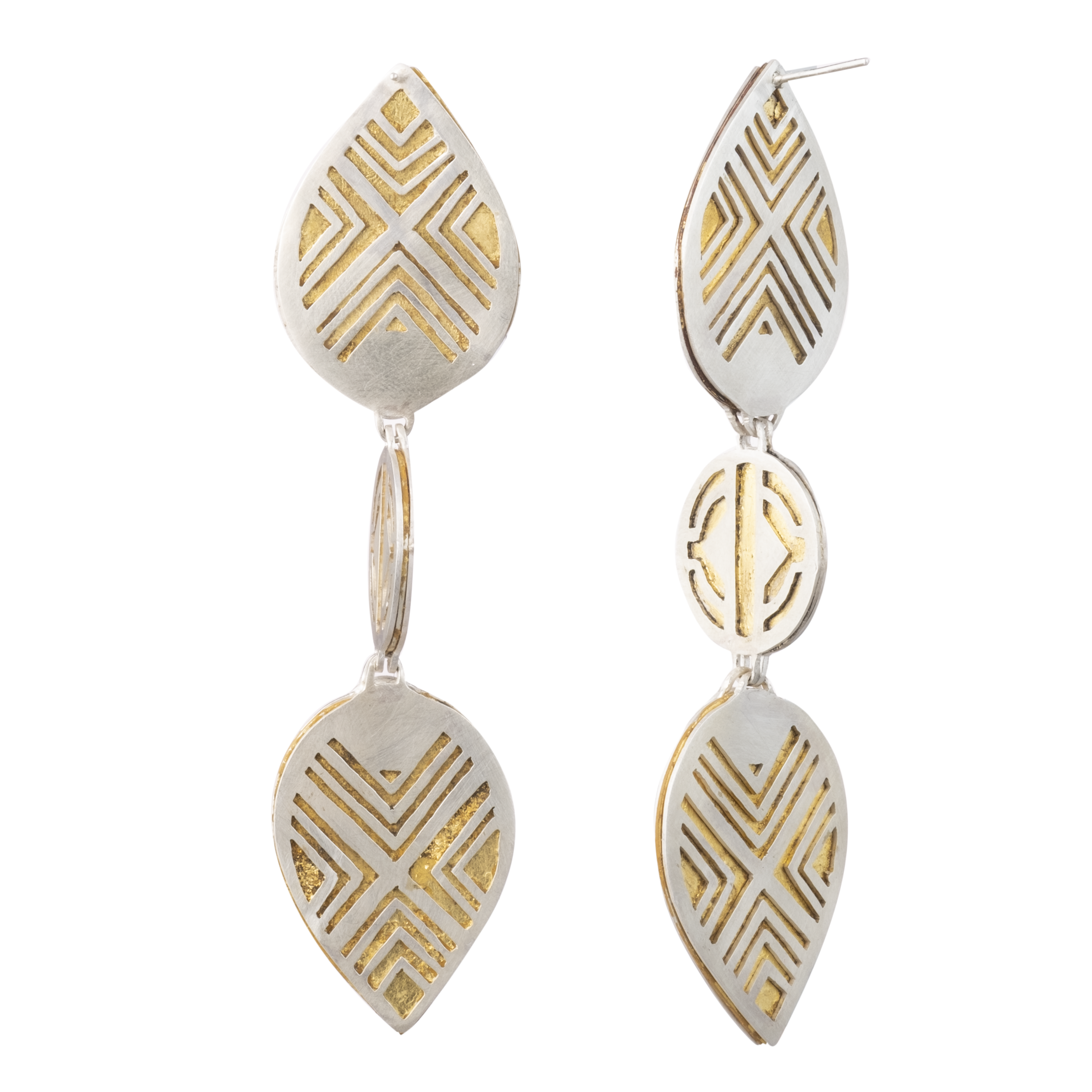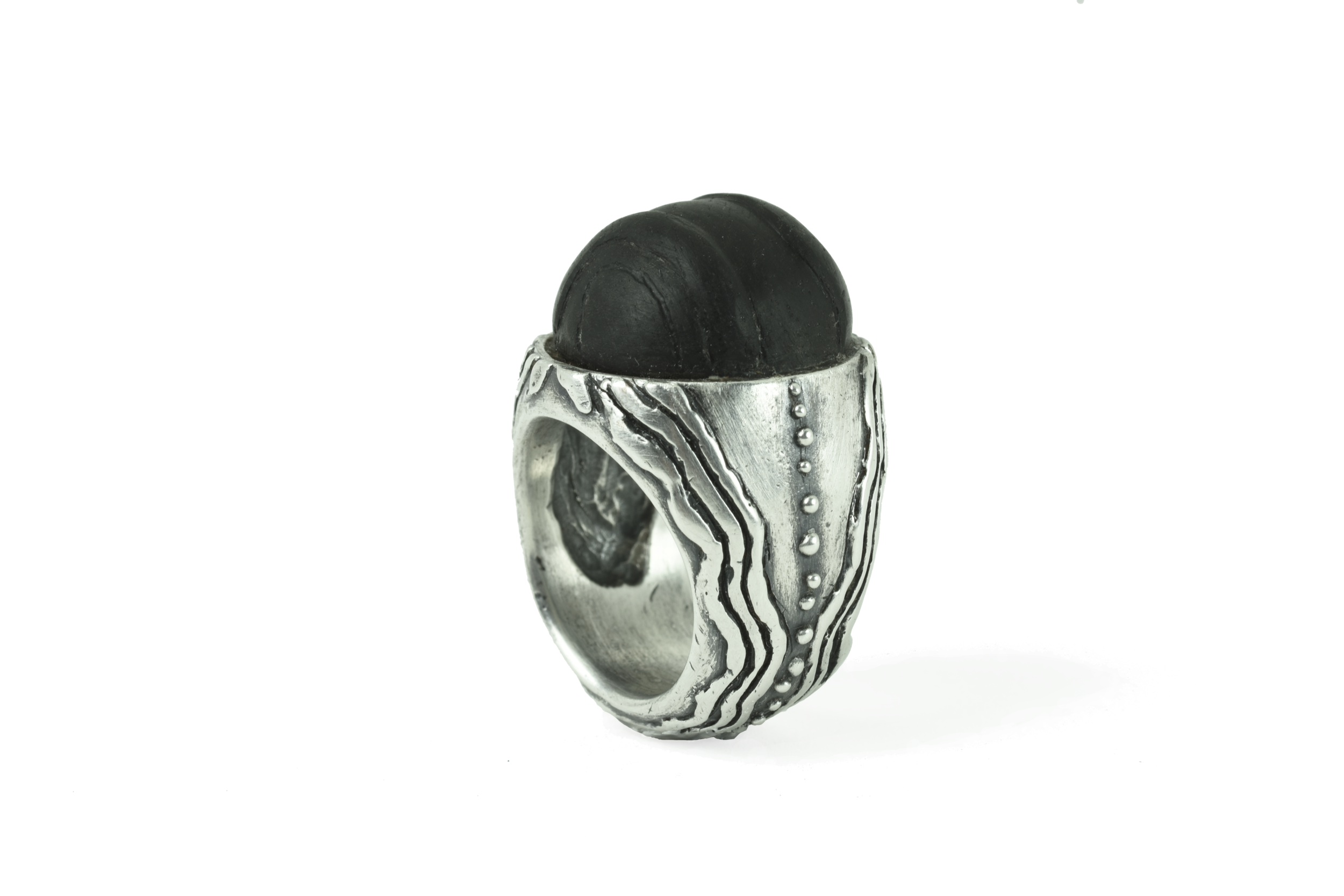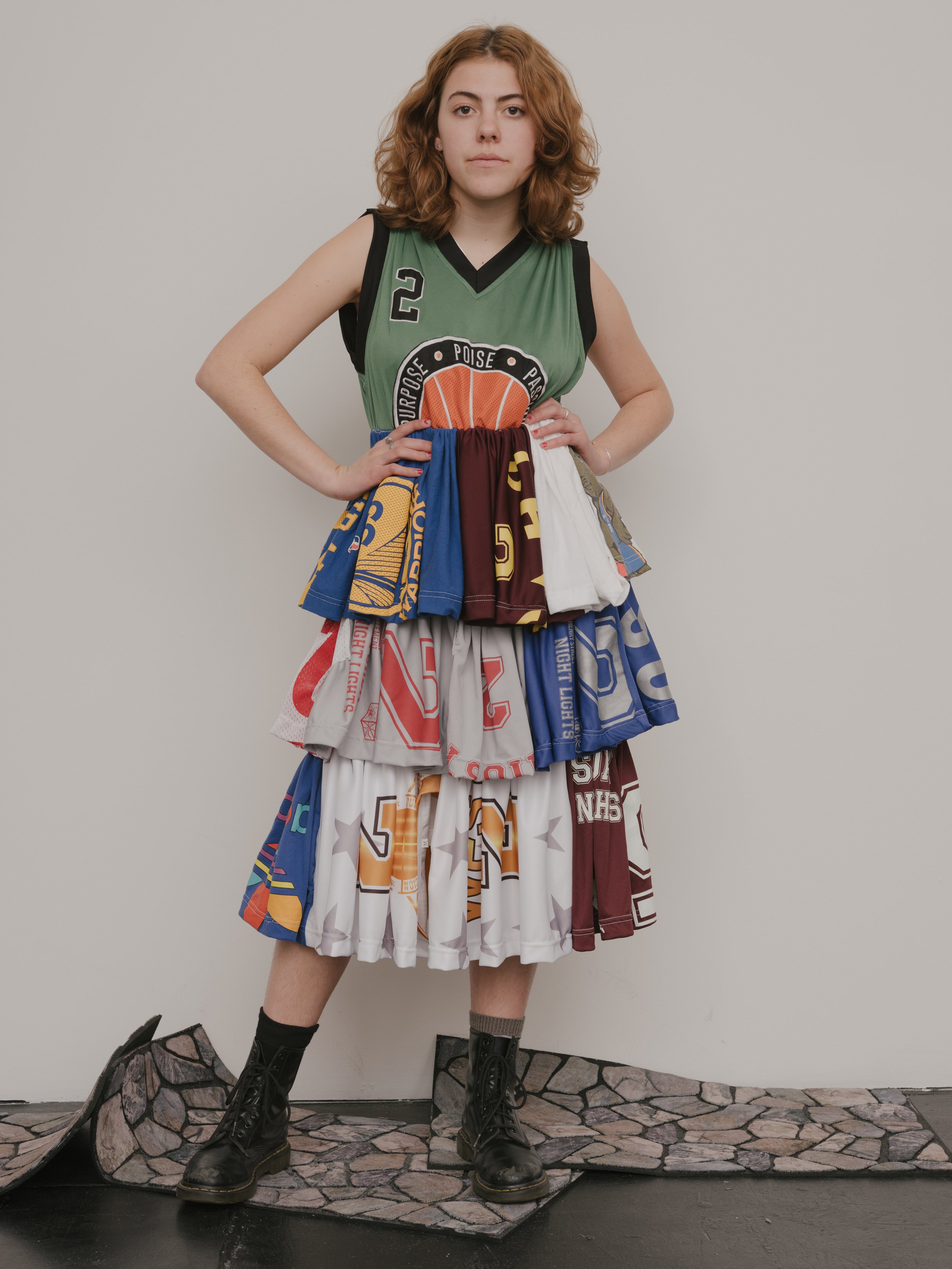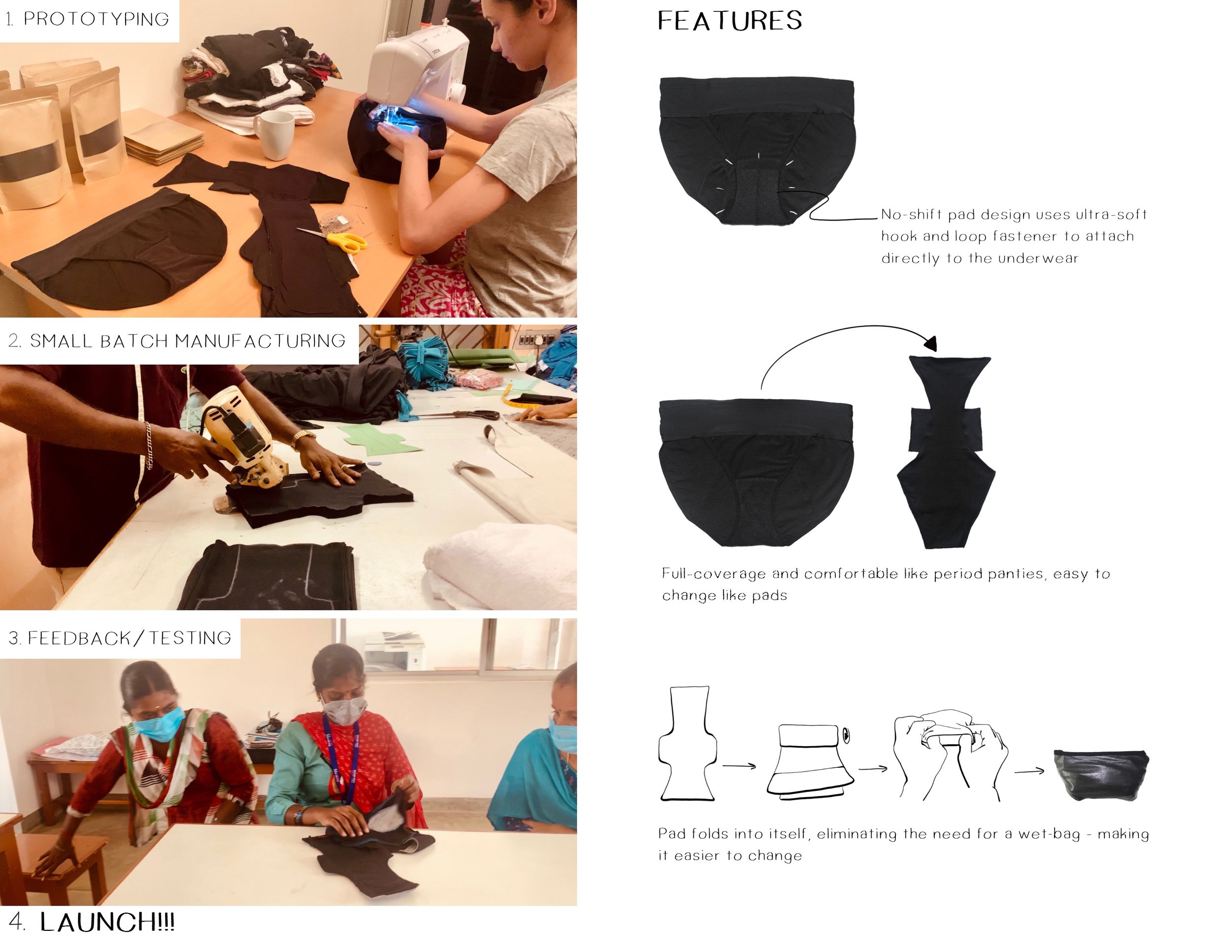Notes from the Underground: Designers on Pivoting in the Pandemic
For the last year and change now, sartorial news in the U.S. has centered around the generally dispirited state of pandemic dress, on the one hand, and the domino of big retail bankruptcies, on the other. In search for glimmers of hope as well as authentic accounts of how smaller-scale businesses and independent designers have fared, I decided to turn the spotlight on a group of recent Pratt graduates who are making their way in fashion, jewelry, knitwear, and industrial design. I interviewed each subject about how they have been navigating the pandemic as both producers and sellers – how the pandemic has affected their creative processes, their business strategies, their design communities, their design identities. Meet Malisa, Margaret, Liv, Jess, and Uma.
Images above courtesy of Malisa Canedo, Za’a Jewelry
Malisa Canedo, Jeweler | NY, NY
I lost studio access, so I couldn’t use the equipment and tools I’d been working with. I set up a workshop in my room. I went back to basic methods, and had to make do with cheaper materials to keep production costs down. Gold, for example, was now out of the question – gold prices skyrocketed during the pandemic.
People also weren’t making big requests anymore, so I did a lot of small jobs, mainly repairs for friends and acquaintances. Repairs don’t require a lot of creativity, but they can be challenging to do well. Friends who are getting married then started asking me for advice on choosing wedding rings, and that became another side job. I’ve always seen myself as a bench jeweler, working with my hands, and these days I’m more of a jewelry consultant or adviser.
I’ve decided to go back to school to gain a better understanding of the art market. Even though many of my peers tend to favor less labor-intensive techniques, I’m committed to handworked jewelry. There are still jewelers who build chains by hand or do gold granulation (an ancient decorative technique where tiny drops of gold are applied to a surface). I know there’s a market for it.
Malisa (Pratt ’19) is currently studying for an M.A. in Art Business at Sotheby’s Institute of Art in Manhattan. You can find her label Za’a, which means corn in Zapotec, on @zaajewelry.
Images above courtesy of Margaret Burton
Margaret Burton, Sustainable Streetwear Designer | Charlotte, NC
The pandemic gave me the time and financial resources to completely devote myself to my label. In 2019, I’d registered as a non-profit since I use donated clothes to make products, but I was also part-timing at a leather goods store. Then, two things happened in 2020. First, my friend, who was pregnant at the time and needed masks for hospital visits, asked me to make masks for her. This was early on in the pandemic, before the CDC was requiring masks in public. My friend told me that all these pregnant moms were talking about their need for masks on Facebook. A lot of companies hadn’t figured out how to shift their production to masks yet, so, from February to July, I made and sold a ton of masks, which catapulted me into a healthy direct-to-consumer business.
Second, I lost my job at the leather good store in August. Now, I had time and enough revenue from the masks to start figuring out my core products. I hired a marketing consultant. That was really helpful. I expanded my presence on Instagram, and even though I’m not a fan of it – I would happily pay a few dollars a month for an ad-free social platform, it’s necessary for an emerging designer.
I’ve noticed that the pieces that have been selling the best tend to speak more loudly. Statement pieces. People are less into practical clothing, like a plain tee, maybe because they’re dressing more for themselves. And after the Capitol Hill attacks, I started making eye masks because I couldn’t sleep that week and figured there were other people who couldn’t sleep either. I’m not usually a hoarder, but I kept the dead stock silk from my graduation collection, and used that as well as cool vintage t-shirts I’d found at the thrift store.
Margaret (Pratt ’16) designs in the company of chickens and an enviable vegetable garden. Check the latest drop at @margaretburtoninc.
Images above courtesy of Liv Ryan
Liv Ryan, Sustainable Workwear Designer | Brooklyn, NY
At first, I just wasn’t inspired. I’d been working a retail job full-time while designing on the side, and, suddenly, I was collecting unemployment and living with my parents. In the early months of the pandemic, I had a routine: wake up, have breakfast, work on my label, but the factory in Gowanus that I’d bring my samples to shut down, and I have a love-hate relationship with sewing. Then, I started digging into the bags and bags of scrap material that I hadn’t had time to deal with before – I’m ridiculous, I keep everything – and I became inspired to get back into the craft of making clothes. There was no urgency because of the pandemic. I had unemployment. I could take my time.
In summer 2020, I made a t-shirt with a big cutout in the center from some scrap fabric I had, and people freaked out. I got so many requests over Instagram. My clientele had mostly been in New York, where I’m from, some in Los Angeles, and now I was shipping to Paris, even Japan. I really dislike Instagram – I hate having to be “relevant” – but it is super positive for outreach, and I do notice that when I post more, there is a direct correlation with sales. During the pandemic, I started working with a few small online boutiques too, and their IG posts helped a lot with sales.
In September [2020], I started back at my retail job on a part-time basis, but I want to get to a point where I can work full-time on my label. Eventually, I want to open a brick-and-mortar concept store. I want to get into making furniture as well as clothes, showcase my friends’ work, host music shows and private dinner parties at night, kind of like Public Records in Gowanus. Cooking has always been a huge part of my life, and I think food, art, architecture, they’re all related. My boyfriend and I started baking grandma pies in his parents’ brick oven during the pandemic to fundraise for Black Lives Matter. I’ve made fabric based off the pasta sheets we cooked with. I’ve learned that you can still be creative and push your stuff during the pandemic.
On Thursdays and Fridays, Liv (Pratt ’18) presides over the zero-waste, all-handmade apparel and lifestyle emporium, M. Crow, in Soho. She is otherwise greening the Brooklyn fashion and food scenes at @livryannyc and @rowhousebk, respectively.
Images above courtesy of Jess Stahl, Stahl Knit
Jess Stahl, Knitwear Designer | Philadelphia, PA
It’s been hard to design so much from a phone portal through the pandemic – a lot of my inspiration has come from seeing work on and meeting people through Instagram. It was also challenging to do shoots. Everyone has to be vaccinated, so I’ve been using myself and my friends as models, just us goofing around on the roof of my building, in our rooms, in a park or parking lot. But people have been responding to that. They’ve been telling me the posts are cute. Because of the pandemic, I think fashion is becoming less exclusive and serious, and more about community. People are willing to support small businesses and spend money on handmade items.
I used to tone down my colors, and now I’m going for over-the-top. After the pandemic, we all just crave things that make us happy because it’s been such a heavy year. I’ve been going back to my own childhood, playing on themes of comfort and nostalgia. My grandma’s interior decorating style really influences my aesthetic, and my label basically modernizes her craft vibe and retro palette.
One of the eye-opening things about the pandemic is how terribly most large companies treat their employees. I used to work for a huge lifestyle retailer, and now that I’m working for myself and getting my bucket hats manufactured by knitters in Bolivia, I pay more for factories that I know are paying their workers well. My previous job was all about making money for the company and being on top of what’s trending, and I’m trying not to do that. I’m at a place where I’m figuring out my design identity and where I want to go with my label. I want to make a world out of my things.
An Ohio native, Jess (Pratt ’18) is on a mission to infuse the Philly creative scene with NY transplants. Crocheted crop tops and rainbow hoop earrings retail on @stahl_knit.
Images above courtesy of Uma Smith, Simhona
Uma Smith, Sustainable Industrial Designer | Dubai, UAE
I got the push I needed from the pandemic. I used to think that I could teach kids full-time and design at night, but now I’m full-time on my period underwear startup and giving it my best shot. I’m designing from home, working online. Mall culture is becoming less and less relevant, so instead of selling to stores or even on large digital platforms like Amazon, I plan to set up a Shopify account and use social media to sell stuff myself.
Before the pandemic, I’d designed an epilepsy pillow that got a lot of press, so I thought I’d have to invest in that project instead of my period underwear startup. I’m most passionate about period underwear though. I’ve always wanted to work on addressing period poverty through designing low-cost, effective reusable menstrual pads, but I wasn’t sure it would be a financially viable project. I began partnering with NGOs like AFRIpads in Uganda. Two NGOs in India agreed to test my designs on 400 subjects. I thought period poverty was only a problem in developing countries, but when the pandemic hit, I learned that low-income people in the United States who came to depend on community centers and schools for menstrual pads were totally out of luck. Toilet paper sold out, then menstrual pads. This shortage wouldn’t be as critical if people had more access to reusable menstrual products. I realized that my target market was much larger than I’d initially envisioned.
Take Period Nirvana – the woman behind the brand was a stay-at-home mom, and her products just took off during the pandemic. I’m obsessed with her. She has 100k followers on TikTok, and mainly markets her stuff that way.
I was supposed to start production in India, but with the severity of the pandemic there, I’m now trying to manufacture in Sri Lanka with the same factories that make Thinx underwear. I’m also trying to work with a local UAE manufacturer. And I’m continuing to pitch to investors. The pandemic has taught me that your future is a mystery.
Uma (Pratt ’18) is the founder of the reusable menstrual pad brand Simhona, named after her grandmother, the most empowered woman she knows. Follow her on Instagram at @sim.hona to connect and join the period underwear revolution.

























